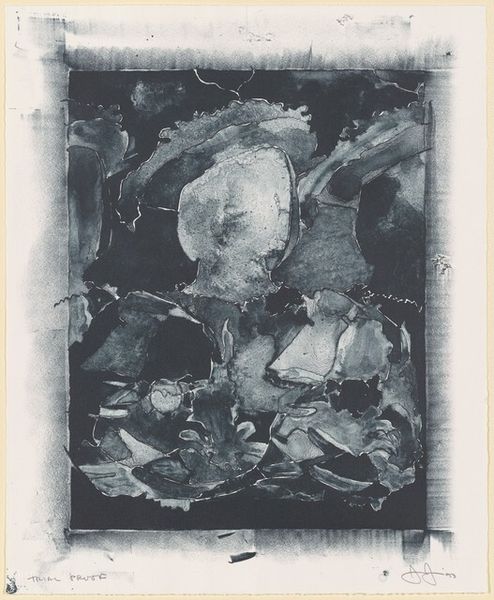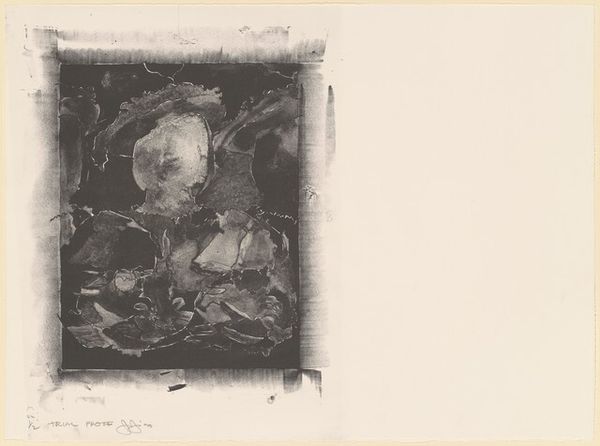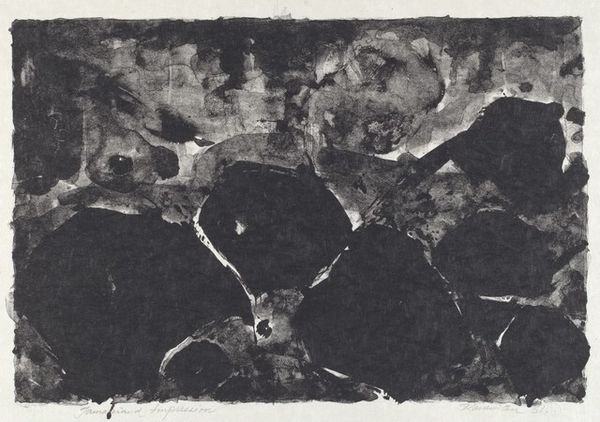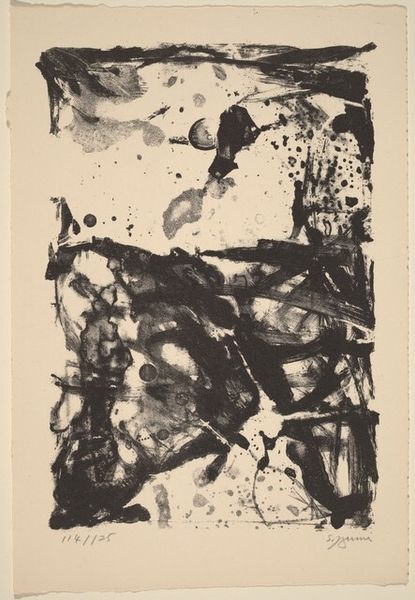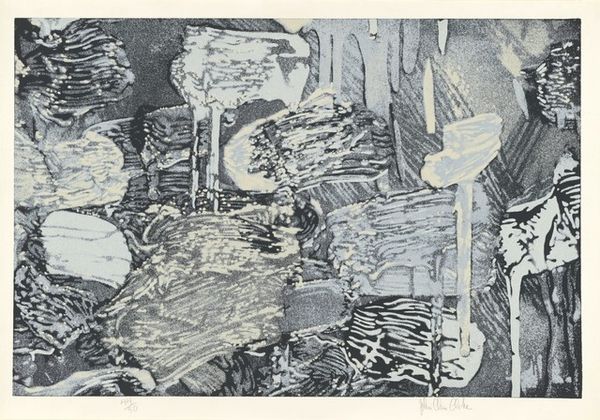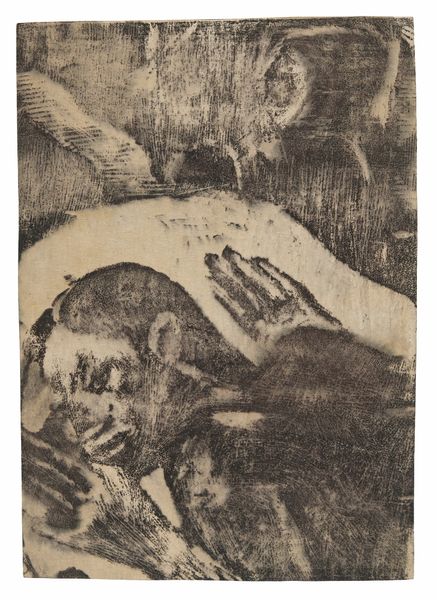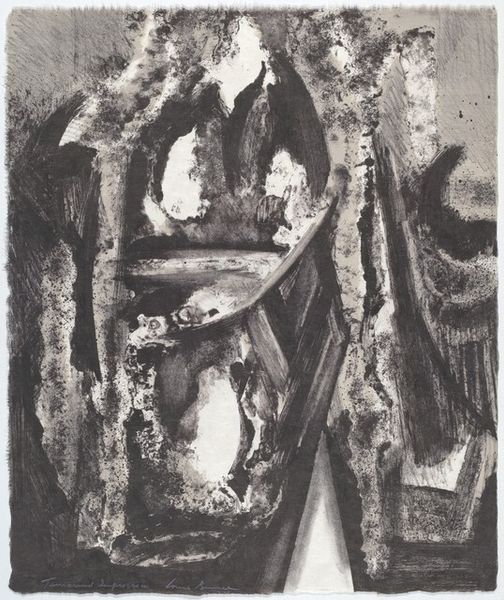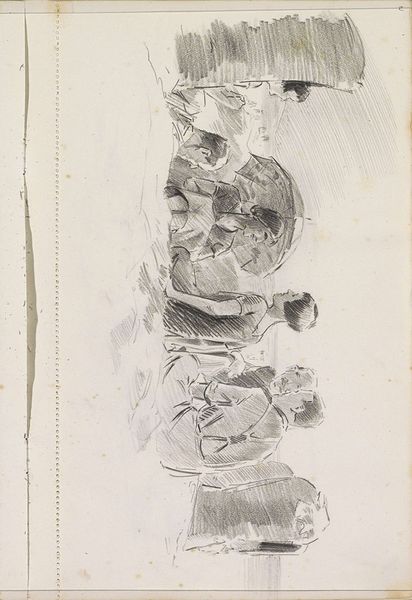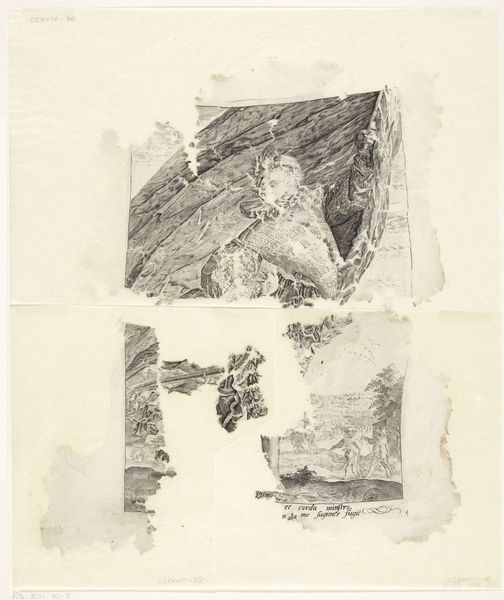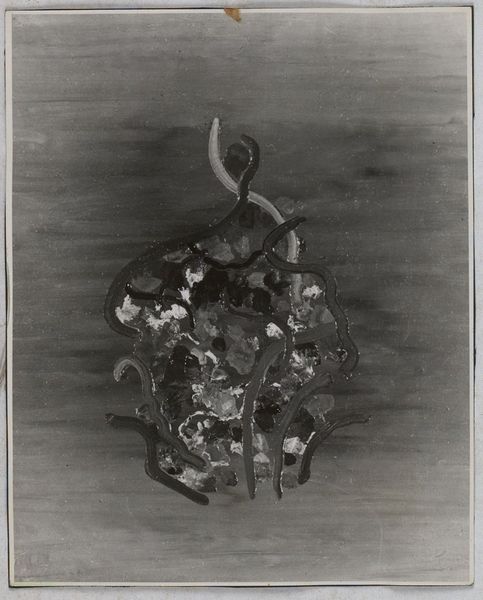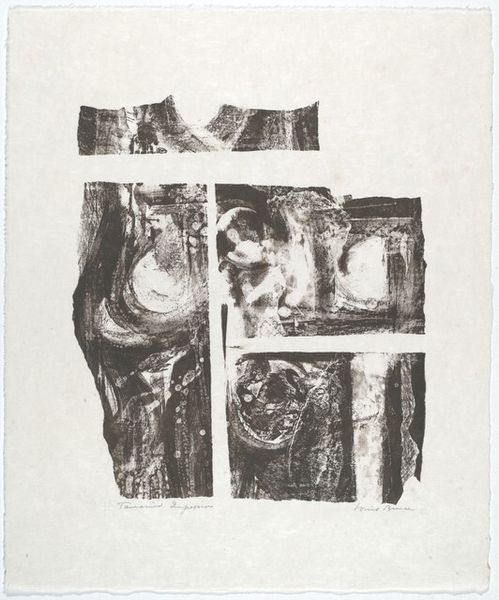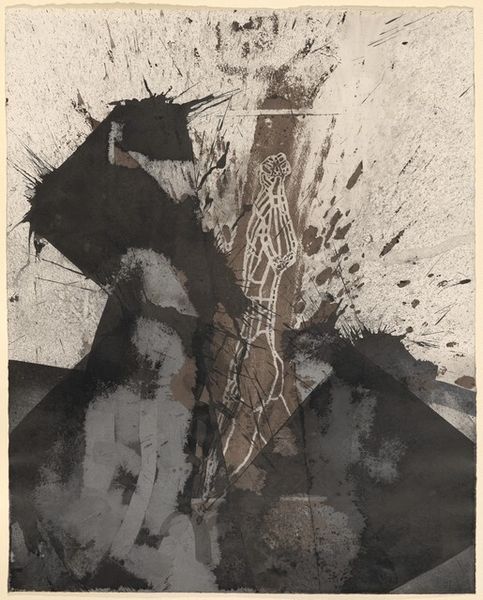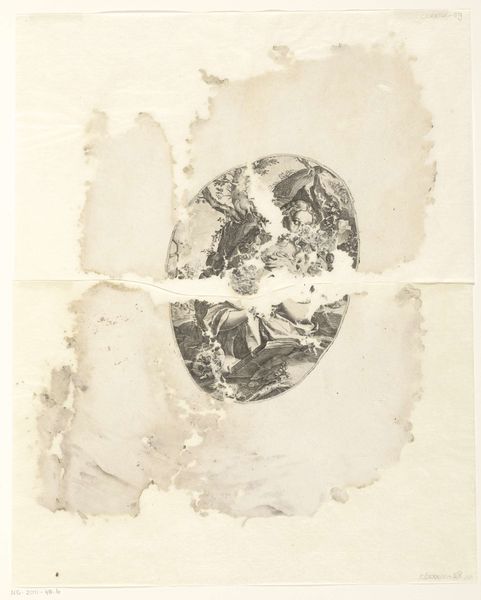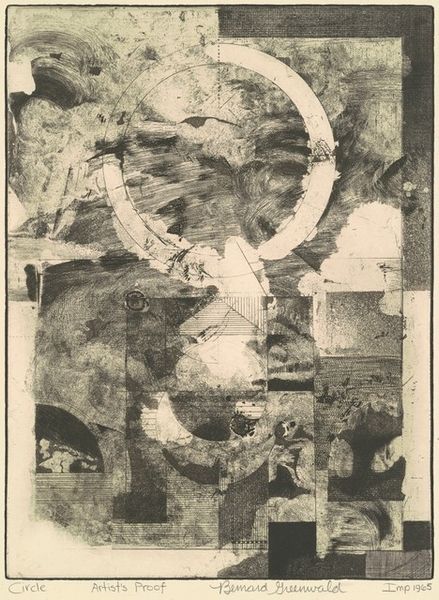![After Holbein (In Portfolio Artists against Torture) [trial proof] by Jasper Johns](/_next/image?url=https%3A%2F%2Fd2w8kbdekdi1gv.cloudfront.net%2FeyJidWNrZXQiOiAiYXJ0ZXJhLWltYWdlcy1idWNrZXQiLCAia2V5IjogImFydHdvcmtzLzNmMjA1MzAwLTQ5ODMtNDBmMy1hYzI4LTk4ZmRmNzhhYjAxNi8zZjIwNTMwMC00OTgzLTQwZjMtYWMyOC05OGZkZjc4YWIwMTZfZnVsbC5qcGciLCAiZWRpdHMiOiB7InJlc2l6ZSI6IHsid2lkdGgiOiAxOTIwLCAiaGVpZ2h0IjogMTkyMCwgImZpdCI6ICJpbnNpZGUifX19&w=1080&q=75)
After Holbein (In Portfolio Artists against Torture) [trial proof] 1993
0:00
0:00
drawing, print, graphite
#
drawing
# print
#
abstract
#
neo-dada
#
graphite
Dimensions: sheet: 57.15 x 42.86 cm (22 1/2 x 16 7/8 in.)
Copyright: National Gallery of Art: CC0 1.0
Curator: Standing before us is Jasper Johns’s compelling graphite print, "After Holbein (In Portfolio Artists against Torture) [trial proof]" from 1993. A study in grayscale and form. What strikes you first? Editor: Definitely its dreamlike quality, almost like a half-remembered face fading in the shadows. It feels heavy with unspoken things. And is it truly a trial proof? There is a sketch-like quality to the edges… Curator: Yes, it seems Johns is wrestling with the composition here, revealing a process, it is from the "Artists Against Torture" series so it comes from the artist's emotional world when he engaged with the portfolio project… He is invoking Holbein. I think there is so much cultural weight loaded into a reference to Holbein's paintings and woodcuts. Editor: Holbein, who danced on the edge of religious and political upheaval! I see what you mean. There is a mirroring, or perhaps a fracturing, here, as if Johns is looking back through Holbein and across centuries. All that symbolism echoes... skulls representing mortality and saints... I wonder if Johns' abstraction here works to make torture universally recognisable and relatable beyond one time period. Curator: Perhaps. Abstraction, as an invitation for personal projections and, perhaps even confrontation... As Johns once said: “Take an object, do something to it. Do something else to it.” Here he’s done that to art history itself. It has a layered density. Editor: Absolutely. Looking at it more, I notice the contrasts, smooth and coarse, light and darkness. In psychoanalysis, chiaroscuro, and stark contrasting, speaks to a divided self. Do you think that the goal for social justice might invite division within those trying to act justly? It seems such images work in many dimensions, psychological and material. Curator: Division or perhaps struggle. To look at Holbein now in a different, modern, era after massive cultural changes feels appropriate for work associated with protesting the concept of Torture. Jasper Johns makes these connections palpable by creating what is like an image from memory: vague, evocative and complex. Editor: Vague yet so piercing. Curator: Indeed. A palimpsest, that echoes through time, whispering of both past and present suffering. It shows Johns’ work ethic to be moved by compassion, even if he remained distanced and detached at the same time. Editor: Something about the 'trial proof' designation is appropriate given what the overall piece represents. Something doesn't necessarily have to be complete to show promise, hope and/or inspire reflection and critical thought.
Comments
No comments
Be the first to comment and join the conversation on the ultimate creative platform.
